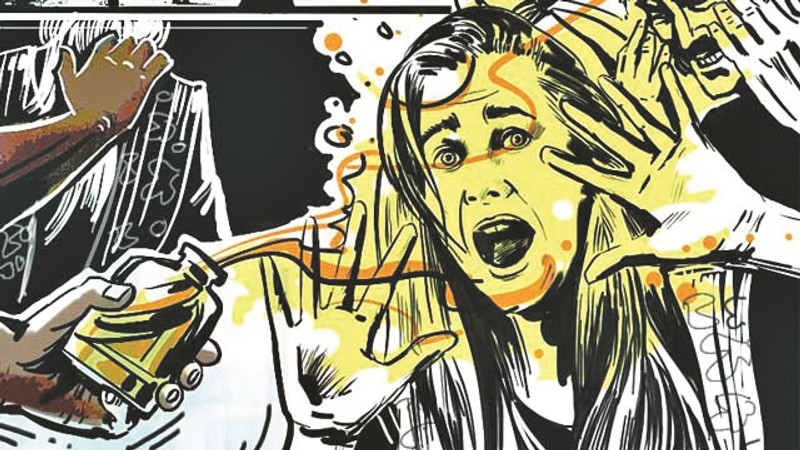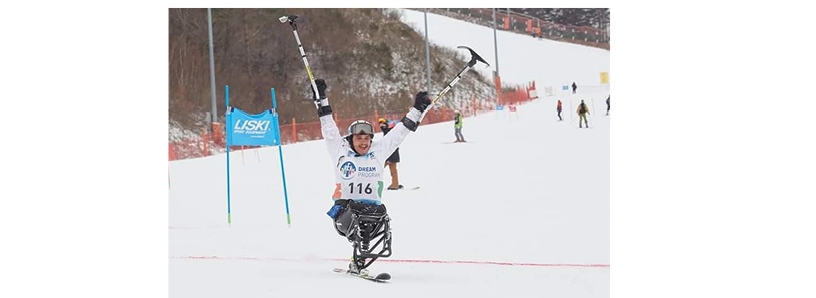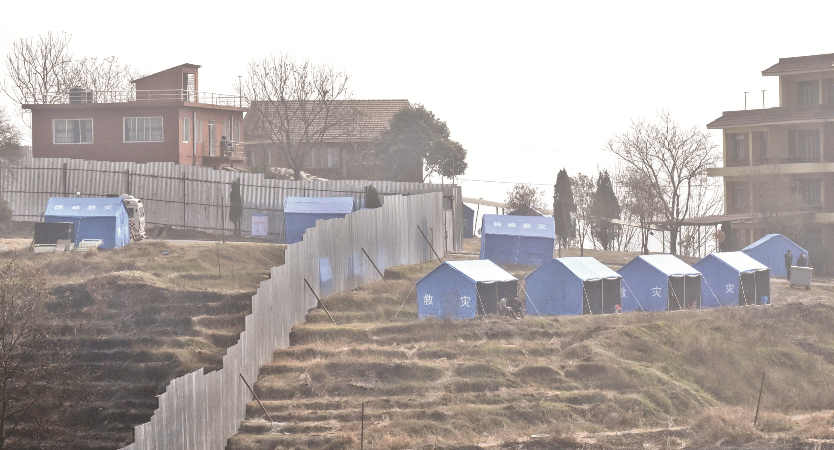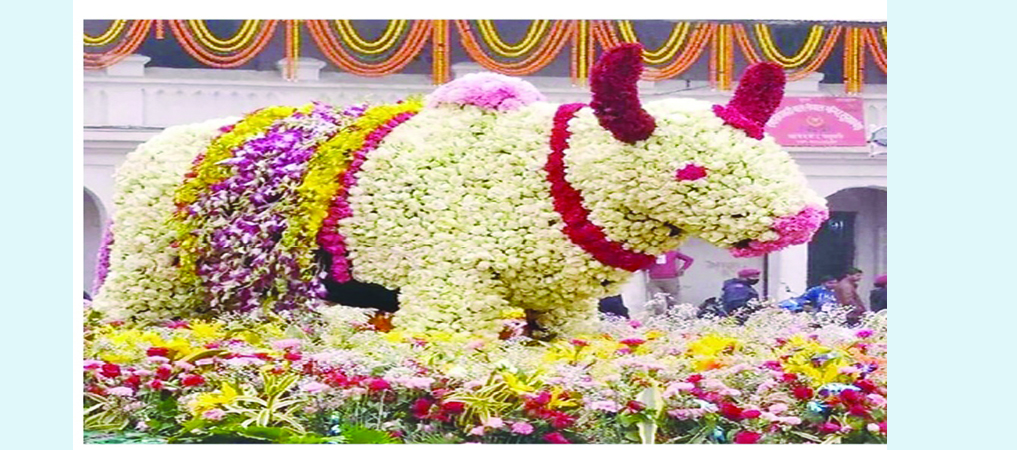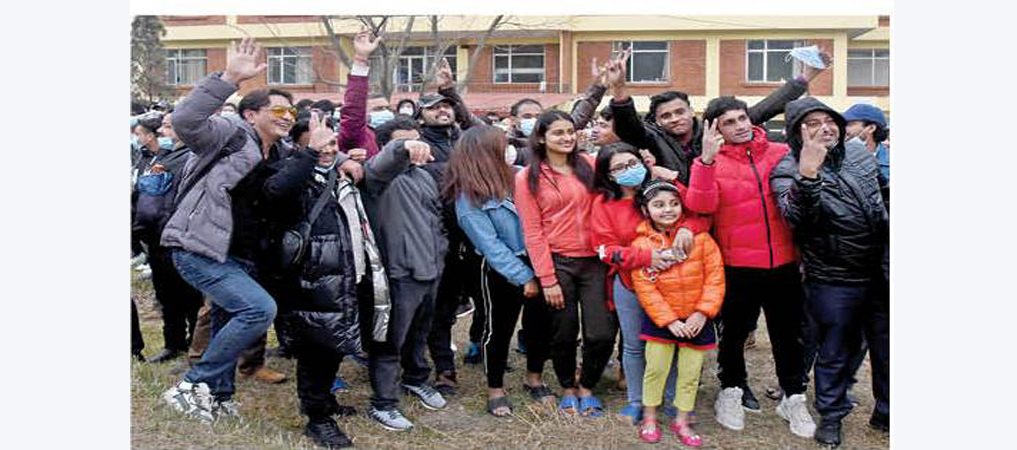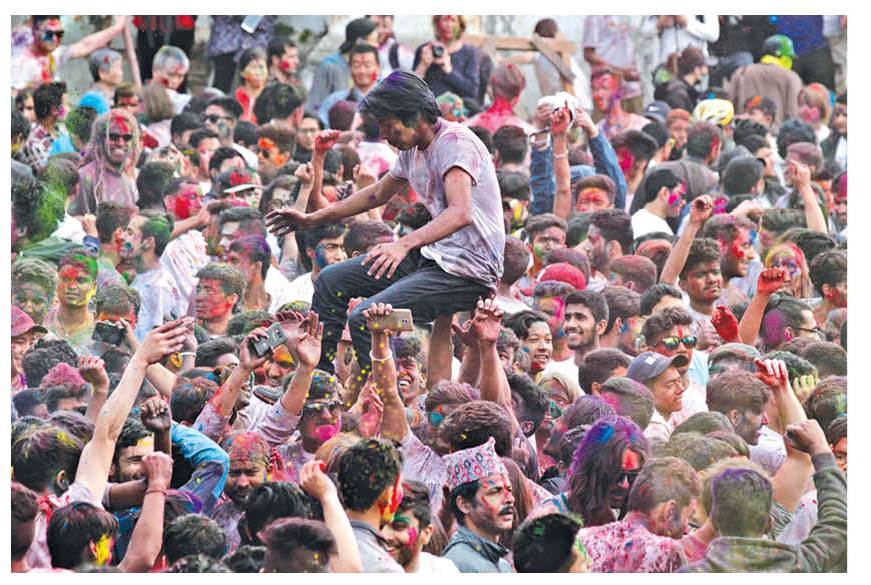Robot to deliver food to COVID-19 patients tested successfully
By Sampada Anuranjanee Khatiwada
Kathmandu, Apr. 15: Along with the global effort to find an antidote to the rapidly spreading COVID-19, which has claimed over 120,000 lives until now, the safety of frontline health workers has been the utmost priority worldwide.
As frontline health workers are regarded as the soldiers in the battlefield, combating with an invisible enemy, they are at a high risk of contracting the virus.
Amid the worldwide scarcity of Personal Protective Equipment (PPE) for the doctors and health workers, a team of Nepali youth have come up with an idea of minimising the risk to some extent.
The Pulchowk-based Robotics Association Nepal (RAN) has created a robot, named Robonauts, which could deliver food to the COVID-19 patients and suspects who have been kept in isolation.
The robot made under the leadership of Prithvi Chaudhari was successfully tested at Tribhuvan University Teaching Hospital (TUTH), Maharajgunj, revealed RAN by issuing a press statement on Tuesday.
“Our team led the conversation with the nurses on how the robot could be operated and controlled in order to enable them to operate the robot on their own, without coming in direct contact with the patient,” informed RAN.
The robot could be sterilised automatically.
Bikash Gurung, chairman of the RAN, said that the capital for the invention of the robot was Rs 96,500 only and it could deliver food up to 100 meters periphery from the control centre.
Gurung informed that the association was capable of making four food delivering robots with the current available resources.
“I urge every member of the association to work together for construction of more robots as such,” said Gurung. “We can make 40-50 robots for now, if we receive help from our members in collecting required utilities.”
Following the successful test of Robonauts, the Army and Police hospitals have requested us to make more robots for them, said Gurung.
The robot can hold weight up to 50 kilograms and can distribute 50 packages of food at one time, he added.
“The initiative of RAN is commendable, however, there are some limitations in practically using it,” said a nurse working at TUTH, requesting anonymity. “We might not be able to operate it if the number of patients increases rapidly or if the situation of COVID-19 patients becomes abnormal, where s/he becomes unable to eat on his/her own.”
She said that in the current scenario of COVID-19 in Nepal, the robot could be used to deliver food and medicines to the patients without coming in direct contact with them.
“As there is a high chance of the virus spread through utensils used by the patients, this could be an effective method to prevent the infection of virus in us nurses, doctors and other health workers who have to be in direct contact with the patient, no matter what,” she added.
The RAN hopes that the robot could help in protecting doctors and health workers from the potential infection of COVID-19 while on duty.
The association has also been striving to create Drone Rapid Response Team, Air Ventilator and Nepal Innovation Mapper Team, to prevent and control the spread of COVID-19.
Recent News

Do not make expressions casting dout on election: EC
14 Apr, 2022
CM Bhatta says may New Year 2079 BS inspire positive thinking
14 Apr, 2022
Three new cases, 44 recoveries in 24 hours
14 Apr, 2022
689 climbers of 84 teams so far acquire permits for climbing various peaks this spring season
14 Apr, 2022
How the rising cost of living crisis is impacting Nepal
14 Apr, 2022
US military confirms an interstellar meteor collided with Earth
14 Apr, 2022
Valneva Covid vaccine approved for use in UK
14 Apr, 2022
Chair Prachanda highlights need of unity among Maoist, Communist forces
14 Apr, 2022
Ranbir Kapoor and Alia Bhatt: Bollywood toasts star couple on wedding
14 Apr, 2022
President Bhandari confers decorations (Photo Feature)
14 Apr, 2022





